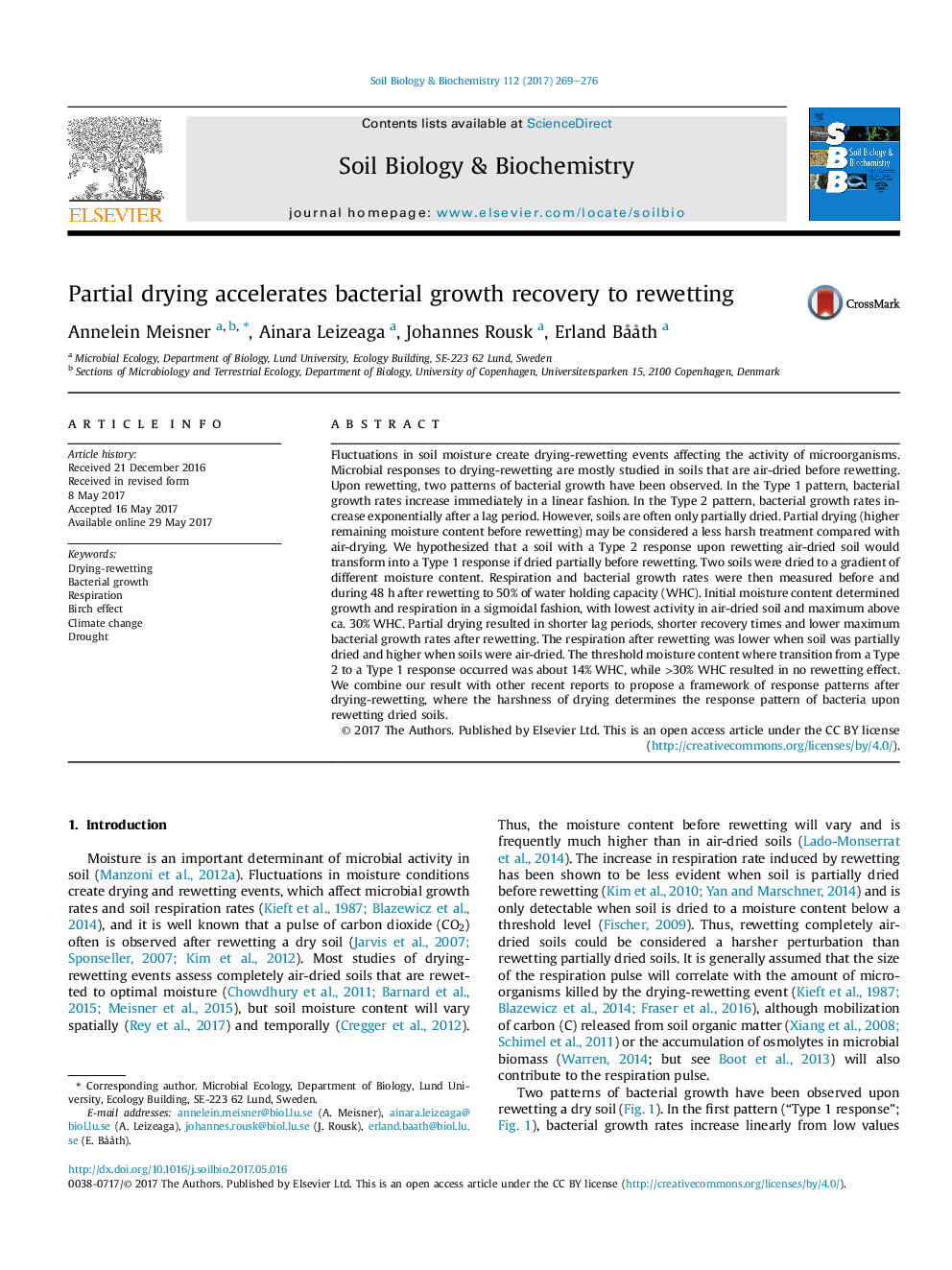| کد مقاله | کد نشریه | سال انتشار | مقاله انگلیسی | نسخه تمام متن |
|---|---|---|---|---|
| 5516356 | 1542572 | 2017 | 8 صفحه PDF | دانلود رایگان |
- Soils were dried to different moisture content before rewetting.
- Bacterial growth and respiration were measured before and during 48Â h post-rewet.
- Shorter lag periods and recovery time of growth when moisture pre-rewet was higher.
- Cumulative respiration was lower when soil moisture pre-rewet was higher.
- Harshness of drying determines bacterial growth patterns upon rewetting.
Fluctuations in soil moisture create drying-rewetting events affecting the activity of microorganisms. Microbial responses to drying-rewetting are mostly studied in soils that are air-dried before rewetting. Upon rewetting, two patterns of bacterial growth have been observed. In the Type 1 pattern, bacterial growth rates increase immediately in a linear fashion. In the Type 2 pattern, bacterial growth rates increase exponentially after a lag period. However, soils are often only partially dried. Partial drying (higher remaining moisture content before rewetting) may be considered a less harsh treatment compared with air-drying. We hypothesized that a soil with a Type 2 response upon rewetting air-dried soil would transform into a Type 1 response if dried partially before rewetting. Two soils were dried to a gradient of different moisture content. Respiration and bacterial growth rates were then measured before and during 48Â h after rewetting to 50% of water holding capacity (WHC). Initial moisture content determined growth and respiration in a sigmoidal fashion, with lowest activity in air-dried soil and maximum above ca. 30% WHC. Partial drying resulted in shorter lag periods, shorter recovery times and lower maximum bacterial growth rates after rewetting. The respiration after rewetting was lower when soil was partially dried and higher when soils were air-dried. The threshold moisture content where transition from a Type 2 to a Type 1 response occurred was about 14% WHC, while >30% WHC resulted in no rewetting effect. We combine our result with other recent reports to propose a framework of response patterns after drying-rewetting, where the harshness of drying determines the response pattern of bacteria upon rewetting dried soils.
Journal: Soil Biology and Biochemistry - Volume 112, September 2017, Pages 269-276
